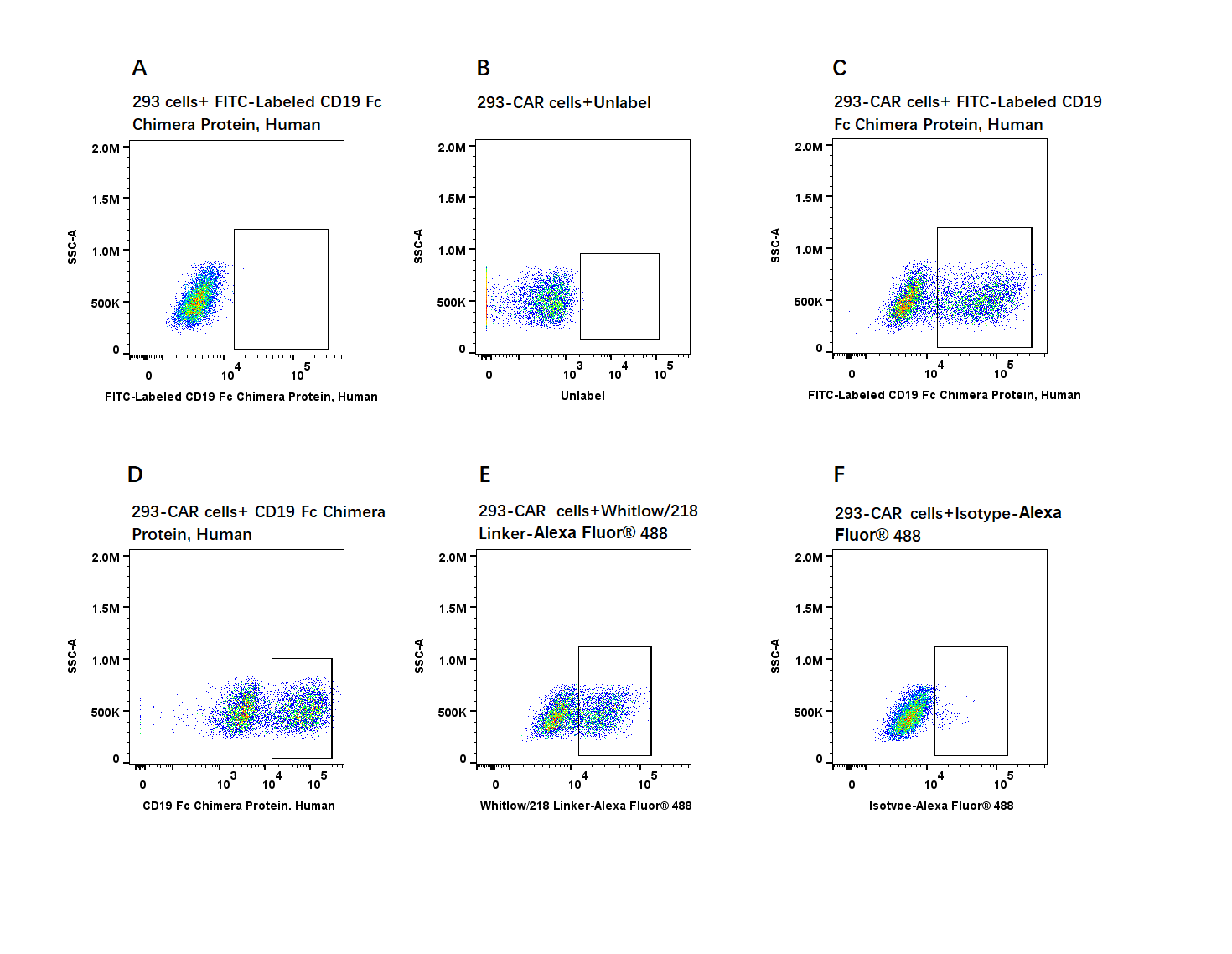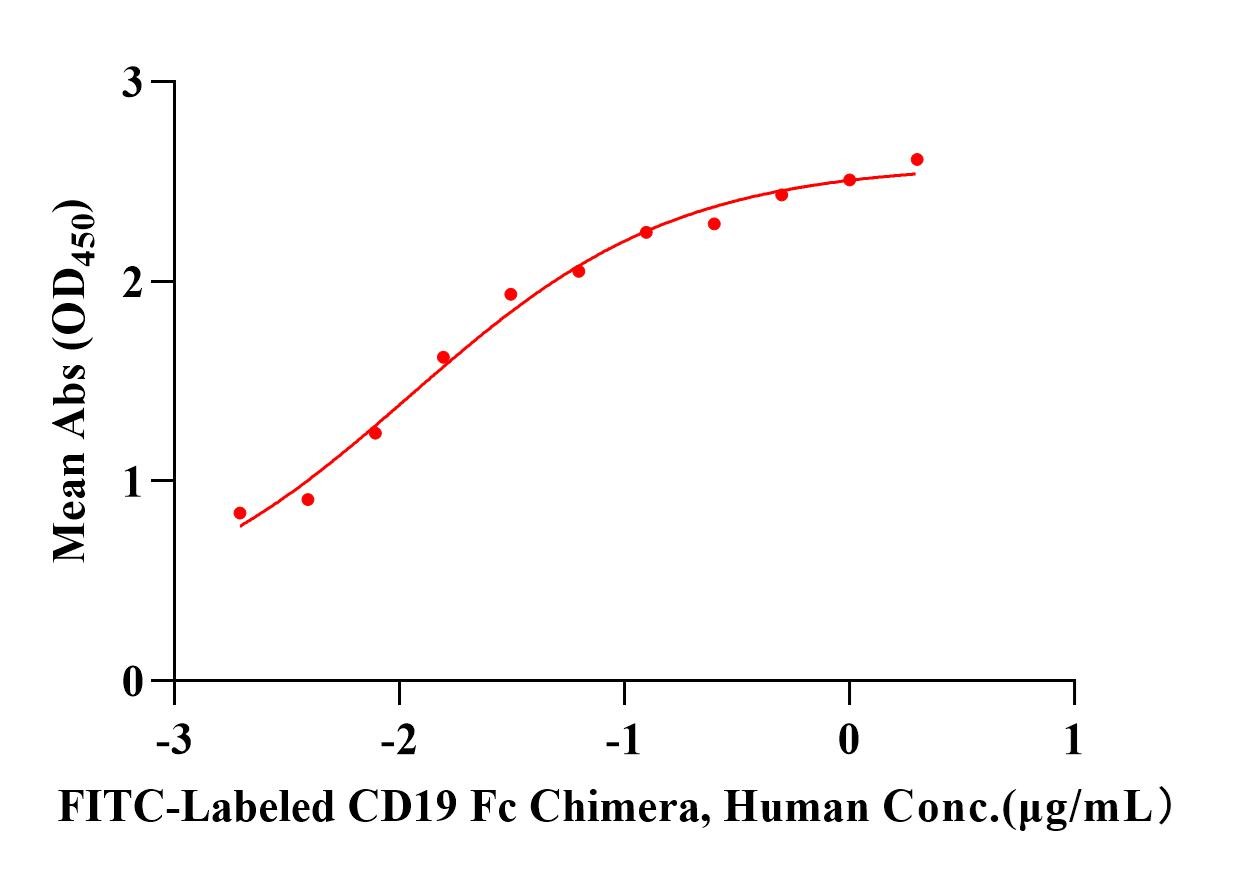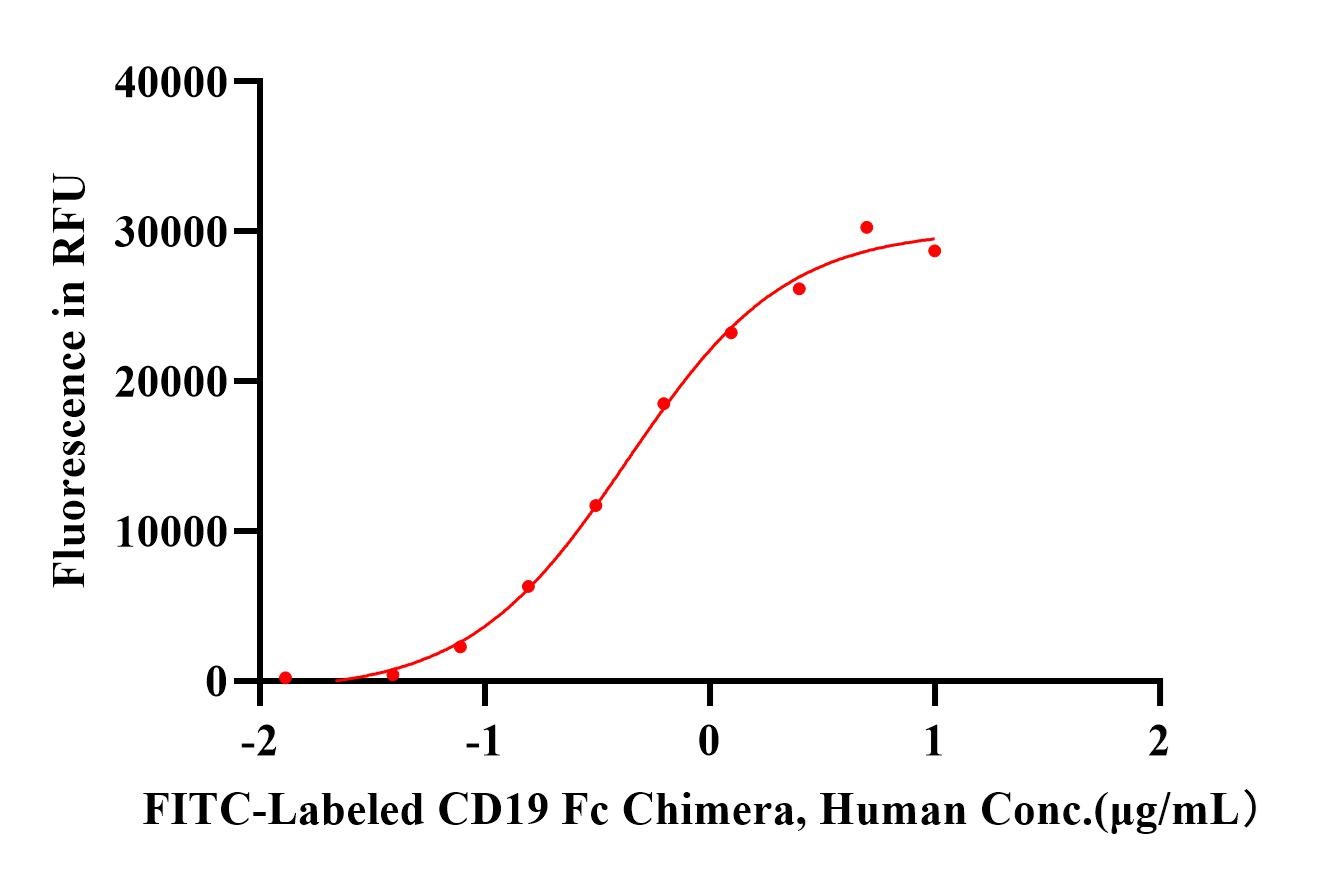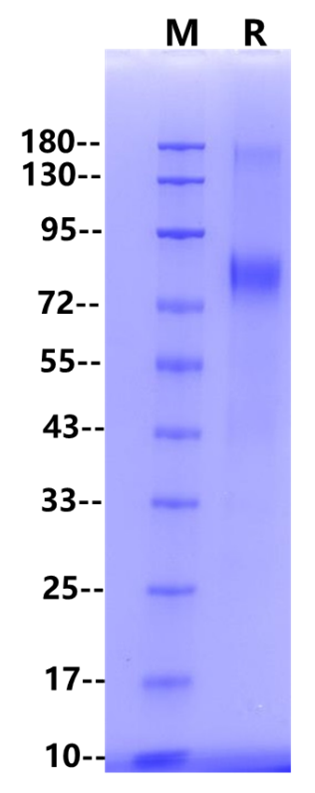Product Specification
| Species |
Human |
| Accession |
P15391-1 |
| Amino Acid Sequence |
Amino acid sequence(Pro20-Lys291, with C-terminal human IgG Fc)
PEEPLVVKVEEGDNAVLQCLKGTSDGPTQQLTWSRESPLKPFLKLSLGLPGLGIHMRPLAIWLFIFNVSQQMGGFYLCQPGPPSEKAWQPGWTVNVEGSGELFRWNVSDLGGLGCGLKNRSSEGPSSPSGKLMSPKLYVWAKDRPEIWEGEPPCLPPRDSLNQSLSQDLTMAPGSTLWLSCGVPPDSVSRGPLSWTHVHPKGPKSLLSLELKDDRPARDMWVMETGLLLPRATAQDAGKYYCHRGNLTMSFHLEITARPVLWHWLLRTGGWKAAAPKSSDKTHTCPPCPAPELLGGPSVFLFPPKPKDTLMISRTPEVTCVVVDVSHEDPEVKFNWYVDGVEVHNAKTKPREEQYNSTYRVVSVLTVLHQDWLNGKEYKCKVSNKALPAPIEKTISKAKGQPREPQVYTLPPSRDELTKNQVSLTCLVKGFYPSDIAVEWESNGQPENNYKTTPPVLDSDGSFFLYSKLTVDKSRWQQGNVFSCSVMHEALHNHYTQKSLSLSPGK
|
| Expression System |
CHO |
| Molecular Weight |
80 kDa,150kDa(Reducing) |
| Purity |
>95% by SDS-PAGE |
| Endotoxin |
<0.1EU/μg |
| Conjugation |
FITC |
| Tag |
His Tag |
| Physical Appearance |
Liquid |
| Storage Buffer |
PBS, pH7.4 |
| Reconstitution |
Reconstitute at 0.1-1 mg/ml according to the size in ultrapure water after rapid centrifugation. |
| Stability & Storage |
· 12 months from date of receipt, lyophilized powder stored at -20 to -80℃.
· 3 months, -20 to -80℃ under sterile conditions after reconstitution.
· 1 week, 2 to 8℃ under sterile conditions after reconstitution.
· Please avoid repeated freeze-thaw cycles.
|
Background
CD19 is a type-I transmembrane glycoprotein of 95 kDa that belongs to the immunoglobulin superfamily and is widely expressed on B cells throughout most stages of B-cell differentiation, though its expression is down-regulated during their terminal differentiation to plasma cells. CD19 maps to chromosome 16p11.2, where it encodes a 540 amino acid protein with two extracellular C-type IgSF domains as well as a large, approximately 240 residue, cytoplasmic tail that exhibits extensive conservation between mice and humans. CD19 is a signal amplifying coreceptor whose expression is restricted to B cells and follicular dendritic cells. CD19 exists in a multimolecular complex with CD21 (complement receptor type 2, CR2), the tetraspanin CD81 and CD225 on the B cell surface. Via its interaction with CD21, CD19 serves as a signal transducing device for complement-conjugated antigen in B cells. Coligation of the BCR and the CD19/CD21 complex lowers the threshold for B cell activation by approximately two orders of magnitude. CD19 is a potential target for monoclonal antibody therapy, and preliminary data have demonstrated its effectiveness in B-cell depletion, making this an attractive therapy for autoimmune disorders and treatment of malignant B-cell lymphomas.CD19 serves as an attractive target for immunotherapy for many reasons: (1) It is expressed on most B-cell malignancies; (2) it is expressed in the B-cell lineage at an early stage, even before the expression of CD20; (3) it internalizes efficiently in lymphoma tumor models252; and (4) it is possibly involved in the development of B-cell cancers.












